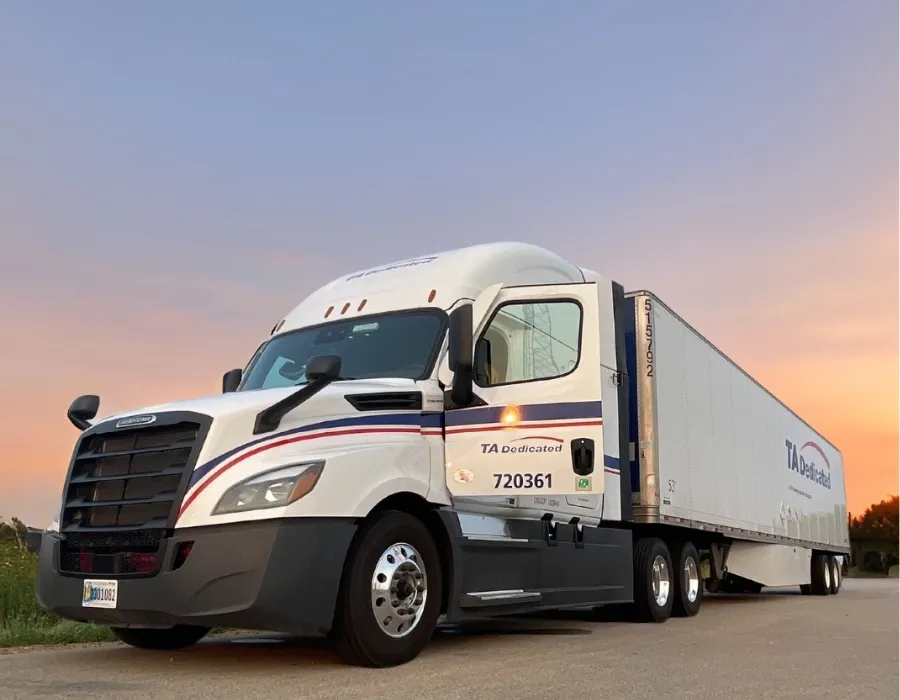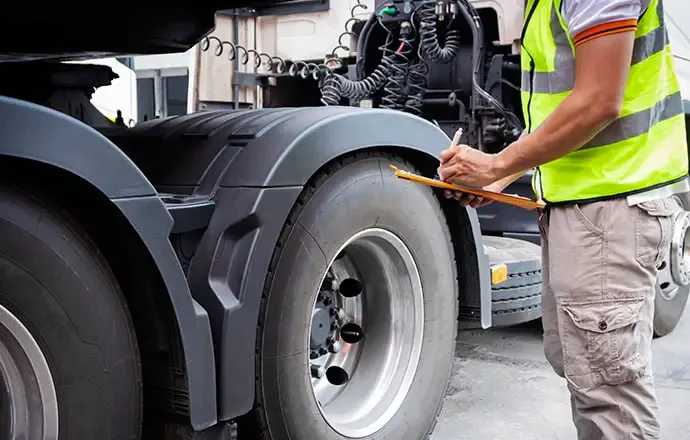Prioritizing Supply Chain Safety
Safety-oriented cultures come from shippers and carriers who value route consistency for drivers.
Why Supply Chain Safety Matters
Cultures with supply chain safety set as a priority protect drivers, employees, the public, and freight while delivering extensive benefits. Working with an experienced dedicated logistics provider to develop a safety-first strategy offers many benefits to your bottom line, including enhancing your brand reputation, mitigating legal and financial risks, reducing driver turnover costs, and managing rising insurance premiums.
Want to learn how to build a safety-first approach into your logistics operations? Download the Safety Guide and White Paper for actionable insights and proven strategies.

Why You Should Partner With A Dedicated Logistics Provider
Financial Impact
Crashes are costly.
The average cost of a truck crash is staggering: $46,765 for a non-injury crash, $383,168 for an injury crash, and over $14.5 million for a fatal crash (FMCSA, 2024). Beyond these direct costs, businesses face skyrocketing insurance premiums, lost time, freight claims, equipment repairs and damaged brand reputation.
Companies that invest in strong safety practices with a dedicated fleet partner don’t just lower their risk — they thrive. In fact, companies with rigorous safety standards see a 40% boost in productivity and fewer job-related injuries (HR Future).

Human Impact
Safety starts with leadership — and pays off company-wide.
Organizations with a strong safety culture see reduced downtime, better asset utilization, and higher retention. According to Forbes, a safety-first approach leads to cost reductions, operational efficiency, and sustainable growth.
Dedicated fleet providers bring SOPs, technology, compliance training, and leadership support to embed safety into every layer of your operation. With 97% of working Americans saying that feeling safe is a key factor in where they work (EHS Today), your commitment to safety isn’t just good policy—it’s good business.

Operational Impact
Road risks are rising — and so are the consequences.
Fleet maintenance lapses and unsafe practices are harder to hide as the roadways become more crowded and dangerous. In 2021 alone, there were 494,000 police-reported crashes involving large trucks (FMCSA). Nearly 13% of trucks inspected during CVSA’s 2024 Brake Safety Week were placed out of service for brake-related violations.
Add in aging infrastructure (39% of U.S. roads are in poor or mediocre condition), distracted drivers, and over 5.7 million new drivers on the road in just two years, and it’s clear: operating safely isn’t optional. A dedicated fleet partner helps ensure safety is never overlooked.
Make Supply Chain Safety Your Next Priority
Key Safety Benefits: Building a Safety-First Supply Chain

Safety-Oriented Culture and Operations
- Train your fleets and internal teams to prioritize safety across all processes.
- Build/embrace accountability with clear safety metrics and reporting.
- Companies with a strong safety culture see up to 70% fewer workplace incidents. – Source, ThomasNet

Fleet Technology & Preventive Maintenance

Compliance & Risk Management
Stats Counter
Commercial Truck Inspections in the United States
7.61 Inspections Per Minute
Injury Accidents Involving Large Trucks
0.94 Accidents Per Minute
Out of Service Orders Issued
0.87 OOS Orders Per Minute
Non-Fatal Crashes involving at least on truck or bus in the United States
1.01 Non-fatal Crashes Per Minute
Cost of large truck and bus accidents in United States
$226,407.91 Dollars Per Minute